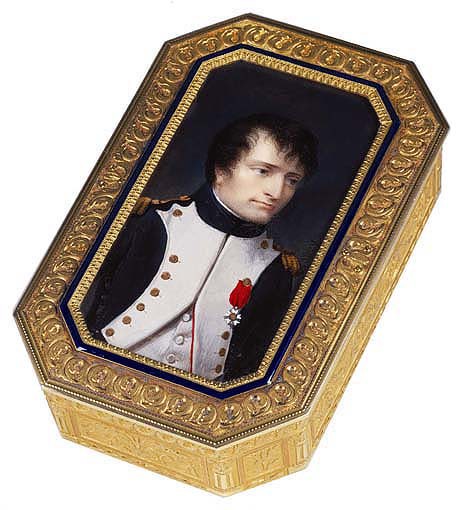As early as the end of the 18th century, Jean-Baptiste Isabey was celebrated as one of the greatest French miniaturists ever. At that time, the miniature genre was at its apogee in terms of popularity, a popularity supported by the Revolutionary wars and later the campaigns of Napoleon, since each soldier wanted to take with him a miniature of his nearest and dearest, and every wife or girlfriend wanted a souvenir of their beloved. These portraits were painted in watercolour or gouache on thin leaves of ivory and then simply framed under glass and either set into the cover of a box – usually a tobacco case – for men, or made into a piece of jewellery – medallion, ring, broach or bracelet – for women.
Although they were often private pieces of sentimental value, miniatures were also ideal for the diffusion of the official images of sovereigns. Right from the beginning of the Consulate, Napoleon turned to Isabey for the production of the majority of the miniature portraits of him which were to be set on present boxes. A relic of the Ancien Régime, the practice of giving diplomatic presents was reintroduced by the First Consul via a bill passed on 7 Thermidor, An VIII (26 July, 1800): “the usual present made by the French government to foreign ministers will be a box bearing the cypher R[épublique].F[rançaise], enriched with diamonds”. After the coronation, orders for these boxes were increasingly made to the jewellers Marguerite and Nitot in an attempt to keep up with demand for official presents. These object were most often referred to as ‘tabatières’ (tobacco boxes), whose quality (expressed through their opulence, the presence of a miniature of the Emperor or his cypher in diamantes) was directly related to the rank of the recipient and the value of the service rendered.
Napoleon paid 500 francs for each miniature, until Isabey complained and the recompense rose to 600 francs in 1808. In order to keep pace with the huge number of orders, Isabey employed his workshop on these projects, simply executing the face or even signing portraits done by his pupils. In 1807, Napoleon, who preferred to be shown in military uniform rather than in his coronation robes, expressed to Isabey his great disapproval at the quality of the most recent portraits which his workshop had produced, which shows us today that the workshop’s output was in fact rather repetitive.
Karine Huguenaud (tr. P.H.)
October 2005


